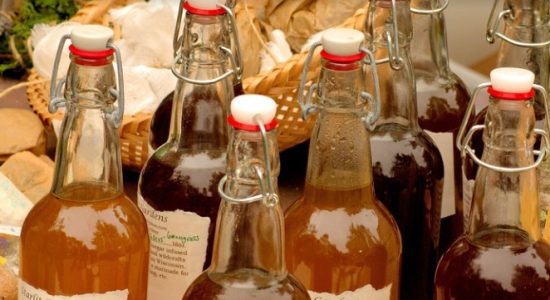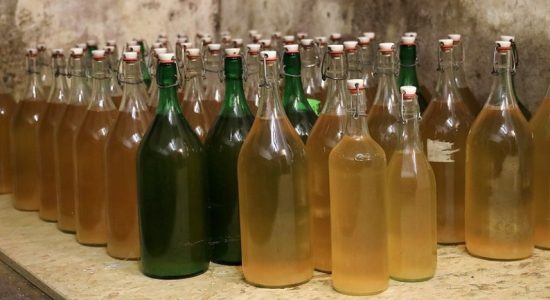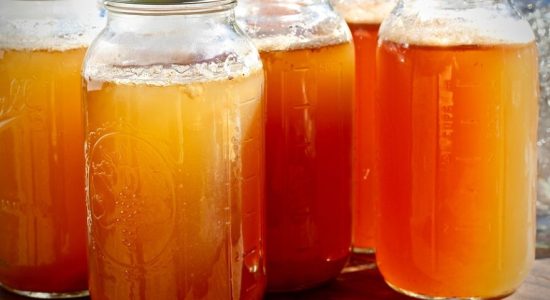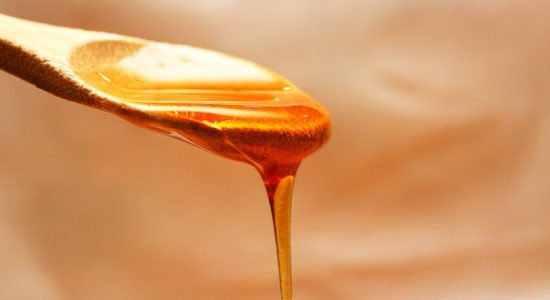Everything About Mead: The Ancient Alcoholic Drink

A long time ago, I met an individual who told me they’d picked up home brewing in their spare time. While I’d heard of beer brewing as a hobby, I was taken aback when the person offered me some of their homemade mead. I hadn’t yet heard the term mead when not referencing events of the 14th century, so I was taken aback.
Mead is a popular alcoholic beverage with strong ties to many ancient civilizations. Water and honey are brewed with spices, hops, and sometimes even fruits to create this sweet beverage – often also called honey wine!
Mead was first invented over 1,000 years ago. It’s got many nicknames and ties to ancient sites, earning it the impressive name Nectar of the Gods. The rest of this article will talk about the long, rich, and diverse history of mead.
Is Mead the World’s Oldest Alcoholic Drink?
Mead is commonly considered the world’s oldest alcoholic drink, dating as far back as the 7th century in some areas around the globe. It has history all the way back to ancient civilizations in China, quickly gaining popularity in Greece, Poland, Africa, and so many other countries.
It’s difficult to pinpoint the initial origin of mead because the evidence of mead’s existence in multiple countries and cultures is extensive. Needless to say, though, mead is highly likely to be the world’s oldest alcoholic beverage, enjoyed by thousands of people internationally.
Mead also predates wine and beer, although many confuse the three because they’re all fermented in a similar fashion. Regardless of the fermentation process, however, mead is distinctly different from both beer and wine– we’ll get to that later.
History of Mead
There are multiple accounts of mead being made and consumed in ancient civilizations worldwide. For example, handmade pottery jars were found in 7th-century China. These jars were examined to find traces of rice, honey, and water mixtures that indicated mead existing as far back as then!
At the same time, countries such as India, Poland, Russia, and Egypt were also developing beer, wine, and mead. Ethiopia, England, and Greece were also known to enjoy mead during its peak so long ago. So, this alcoholic beverage began to spring up in different areas in the Eastern hemisphere and Europe thousands of years ago!
Mead had also made its way into Celtic and Norse mythology. The Celtic nations such as Wales, Ireland, and Scotland chose mead as the drink of choice for entertainment and leisure; Iceland, Finland, Sweden, and Denmark did the same, both nations believing that mead was the drink of the Gods and using mead in many cultural rituals. (Guess where the nickname came from?)
Although mead lasted generations, it eventually became less popular when sugar came onto the scene, and some new tax laws were introduced, making it more challenging to acquire honey.
By the thirteenth century, cane sugar was much easier and more convenient to purchase, replacing honey and beginning to produce beers and wines.
Either way, mead was a luxury before sugars were introduced; often, only the richest could afford to brew and consume it, and almost every ancient civilization around the world enjoyed it.
Mead has also regained traction in the past few years, arguably since certain fantasy movies and TV shows such as Harry Potter, Norsemen, and Game of Thrones have aired.
Now, lots of people brew their very own mead at home with a few simple ingredients and a couple pieces of equipment. The most essential parts are:
- A fermenter vessel. This is where the fermentation of honey, water, and yeast takes place.
- Airlock, storage lids. Storage containers (such as bottles), lids, and airlocks are essential for preventing air from reaching and contaminating the mead.
- Temperature-controlled fridge. A fridge or a temperature control device is important for the brewing and fermentation process. As many brewsters know, homebrewing can be a finicky business!
This list is much more comprehensive, detailing the best homebrewing equipment for those new to the hobby!
Fun Facts About Mead
Aristotle enjoyed mead from time to time, referencing it in some of his written works– that’s how far back mead goes! In the Renaissance, Bronze, and Golden Ages, mead was believed to be the drink of the gods, a magical and powerful substance delivered by the world’s creators through nectar.
In Greece, mead was believed to extend one’s life and keep people’s bodies healthy; mead was also thought to induce creativity. It was also popular in Medieval times, so it is obviously a beverage that has been passed between generations and eras and enjoyed thoroughly along the way!
Originally, though, mead is thought to have come into existence by accident! Believe it or not, natural rainwater and honey would mix in nature-made pools and ferment in the hot sun. Organic yeast would interact with the honey and water in the sun, producing mead that some lucky person happened to come upon!
Over time, this simple mixture of honey and water (and, in some cases, rice) was transformed to include hops, spices, fruits, and herbs. Different combinations of ingredients make a vast array of flavors, which allows mead to be incredibly diverse.
Different Variations of Mead
For example, you can brew mead that tastes dry, sweet, or carbonated, and you can use a variety of different types of honey during the fermentation process to change the flavor even further. Clover honey, acacia, and alfalfa honey are the most classic kinds of honey used for mead.
Mead can also be mixed with beer or wine, and when that happens, the mead is called a braggart (for mead and beer) or a pyment (for mead and wine). Additionally, a cyser is mead mixed with cider!
The addition of fruit to your mead can increase the alcohol content since fruit is able to ferment without any added ingredients– read more about fruit fermentation here.
The different types of mead are genuinely variable, ranging from black mead to white mead and everything in between. There is sparkling mead, sack mead, rhodomel, mulled mead, hippocras, dry mead, and session mead, to name a few more.
Frequently Asked Questions About Mead
Below are a few of the most common frequently asked questions about mead.
Is Mead Considered Beer or Wine?
Mead is neither beer nor wine, though it resembles beer and has been wrongly nicknamed honey wine in the past. The fermentation process for all three beverages is similar, particularly for mead and beer, which both use yeast that feeds on sugars, proteins, and starches to create distinct flavors of beer.
Wine, on the other hand, is fermented with grapes (either white or red) to achieve its color, alcohol level, and taste.
Mead, though, is primarily made with water and honey, compared to beer, which uses water, yeast, grains, and hops. Yeast feeds on the sugars in the mead’s honey/water mixture to create this sweet, rich drink (to put it plainly).
What Are Some Other Differences Between Beer, Mead, and Wine?
Beer can range from 5-9% alcohol, and wine is a little higher, between 11-14%. This is light in comparison to mead, which always has a much higher alcohol content than beer and wine. Depending on how it’s fermented, mead ranges from 6-20% alcohol.
The alcohol content isn’t the only difference between mead and beer and wine, either. Mead doesn’t waste any time with the boiling and mashout stages that beer brewing does and goes directly into fermentation. Mead also spends a much longer time fermenting than beer does– up to three months for a smooth-tasting beverage!
In comparison, beer ferments for one and a half months, although it can ferment longer depending on the style of beer being made. Mead is different from wine, as well– mead can incorporate multiple other ingredients, while wine typically only ferments with grapes.
Now that we know the differences between mead, beer, and wine, let’s look at the long, complex history of the world’s oldest alcoholic beverage.
How Should Mead Be Stored?
The best way to store mead, especially after it’s opened, is in a cool fridge or basement. However, with the higher alcoholic content in mead, it can survive even after opening for up to three months. Unopened, mead can be stored for years.
Mead can be stored in bottles, kegs, and other containers that have tight lights that do not allow oxygen inside. The best method is to bottle mead; check out this guide to the ten essential tips for bottling homebrew. To bottle it, you’ll need enough glass bottles and some airlock stoppers.
This informative read on the best homebrewing equipment is excellent for beginners.
After two years, mead will start to go bad, regardless of whether the bottle has been opened or not. Signs of rancid mead include:
- Cloudy or foggy liquid
- A rotten smell
- A bitter taste
- Discolored liquid
If your mead has gone rancid, a sniff or taste test will be the first method to double-check. It’s good practice always to taste a small amount of your mead before enjoying it anyways to avoid making yourself sick. You can also examine the mead for any mold growth.
What Does Mead Taste Like?
Traditional mead has sweet, tangy, and vanilla flavors in its most basic form. It’s typically dry like wine with some carbonation but can be sweet depending on the mead’s ingredients.
Mead should be sipped in moderation, just as one would drink a glass of sherry or red wine. Since many mead beverages have high levels of alcohol, a few of these drinks will have you feeling intoxicated in no time. Remember always to be careful when consuming alcohol.
How Should Mead Smell?
If you take a nice long whiff of a freshly poured glass of mead, there are a few aromas you should expect to smell. Again, a traditional mead will most likely smell a little bit like alcohol, vanilla, and honey; depending on the ingredients, you may catch the scent of herbs or spices. Some meads smell vaguely of sweet wine.
During the fermentation process, you’ll notice that the scent of honey or yeast– sometimes both, sometimes one or the other– is quite strong. That’s to be expected. Once your mead is ready to be stored, the overpowering smell will have died down.
With that being said, opening a bottle of mead should provide you with a fruity, boozy aroma that is sure to wake up the senses!
What Should Finished Mead Look Like?
Depending on the color of the honey, your mead can range in colors and should be clear and free of particles. It can be brown, amber, black or yellow, or various shades in between. The reality is there is no real limit to the color gradient of mead– it all depends on the ingredients!
With that being said, mead doesn’t have to be perfectly clear in order to be consumable. Some meads finish with a cloudier look. The extent to which your mead is cloudy should be examined in this case– if it’s close to opaque and doesn’t clear within a few more days, you may want to consider trying the brew again.
On the other hand, if the mead is only slightly cloudy with elements of transparency, give the beverage a sniff (or a taste, if you’re brave enough) to determine whether it’s still consumable.
Final Thoughts
In conclusion, mead is a really diverse and rich fermented beverage that uses honey, water, and yeast to produce the delicious alcoholic drink that many enjoy brewing at home!
It can be combined with fruits, hops, spices, herbs, and even other beer and wine to create unique flavors.
Although it came into existence thousands upon thousands of years ago and even lost popularity for a few centuries, mead is making a comeback as an enjoyable beverage in today’s age!
Now, you have more information on the ancient alcoholic beverage known as mead.







